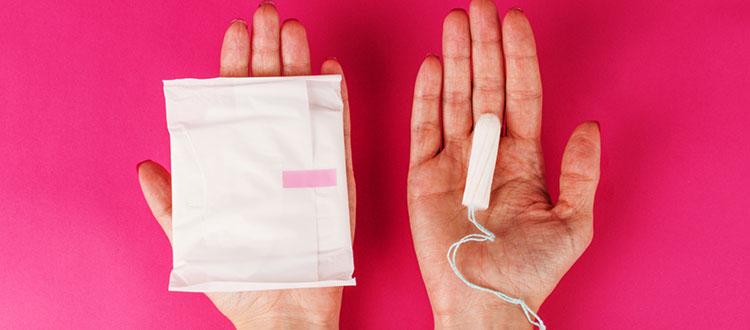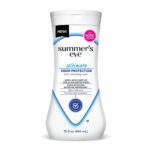Wait, what? – now there are phthalates in tampons and pads too?
 |
| Alex Scranton Director of Science and Research |
Here at WVE we have been concerned about phthalate exposure for years. Phthalates are plasticizer chemicals that are commonly used in cosmetics, in plastic products, and are found in our food. Exposure to these chemicals has been linked to reproductive harm among other concerns. These chemicals first caught our attention about fifteen years ago when large biomonitoring studies, found that women had significantly higher levels of these chemicals in their bodies than men.[1][2] And the going theory was that this was largely due to exposure from greater use of cosmetics.
Since then, thanks to numerous successful campaigns by organizations including WVE, there have been many advances in product manufacturing to reduce and eliminate the use of phthalates. Stricter regulations both in Europe and some in the U.S. have also limited their use. They are still out there, but many large companies have publicly stated that they phased-out the use of phthalates in their products due to the concerns of their customers. These days phthalates can be found on “do not use” lists all over the place. But the focus of these restrictions and voluntary phaseouts has been pretty product-specific – on the products we knew contained phthalates – like cosmetics, children’s toys, and vinyl flooring.
There has really never been any public discussion of the possibility of phthalates in menstrual products – until now. Five new studies conducted in the last two years, have been published looking specifically at whether or not menstrual products contain phthalates. And the surprising answer is a resounding YES! These studies, conducted on products from numerous countries around the world, found that phthalates (including DEP, DEHP, DBP, DIBP) were prevalent in these products — commonly detected in over 90% of product samples tested. The latest study in the U.S., found that every single sample (of the total 43 pads, panty liners and tampons tested) contained multiple phthalates![3]
This new data raises a lot of questions.
1. How come we didn’t know about this before?
The manufacturers of these products are well aware of the bad reputation of phthalates – especially as they have been linked to women’s health and reproductive outcomes. Using these chemicals in products that are used on and in absorbent vulvar and vaginal tissue seems like a particularly risky idea. And the levels of phthalates detected were not insignificant – they were found in the parts per million range – indicating that the manufacturers should have known they were present in their products. But the common lack of transparency about how menstrual products are made, and what they are made of, has left us in the dark until now.
2. Why are phthalates being used in menstrual products?
This question is thus far also largely unanswered, but the researchers did pose some theories. In pads and panty liners, there are commonly plastic (waterproof) layers as well as adhesives – both of which might incorporate phthalates. (Although interestingly, in one study, only the top layer of the pad or liner which actually touches the skin was tested for phthalates – so these top layers would have had to have been contaminated by the other components, possibly during manufacturing). There is also the potential for phthalates to be part of the fragrance when these products are scented. Two of the studies from China found that the scented pads had significantly higher levels of certain phthalates compared to those that were unscented.[4][5]
3. Is the exposure from these products a problem for our health?
Again, this is a largely unanswered question, but we are concerned. The levels of phthalates found in these products varied considerably – some brands contained a lot, some much less. But none of the recent studies disclosed the brand names of the products they tested, so it’s impossible to tell which is which. Add to that the problem, there has been no research conducted to tell us the rates at which phthalates are absorbed through vulvar or vaginal skin. Nevertheless, researchers estimated that tampon use could be responsible for 15% of our total phthalate exposure. Panty liner use could be contributing nearly 10% and pads roughly 3% of our overall phthalate exposure.[6] Eliminating phthalates from menstrual products could make a real dent in the levels of phthalates found in our bodies!
And the fact that there is such variety between individual brands, seems to indicate that levels of phthalates may be controllable in these products – and possibly even avoided altogether.
4. What can we do about it?
Unfortunately, we don’t have the information we would need to identify which products to avoid which have the highest levels of phthalates. But we can advocate for change.
- We can let manufacturers know that we don’t want menstrual products to contain phthalates – at any level.
- We can ask them to take action – to find (and eliminate) the sources of phthalates in their products.
- We can ask our legislators to support funding for research into the impacts of menstrual products on our health – like the Robin Danielson Act.
- We can ask our legislators to support legislation that promotes full transparency of the ingredients in menstrual products – like the Menstrual Products Right To Know Act
- And finally, spread the word! Share this information on Facebook and Twitter.
Want to learn more about what testing has found in period products? Take a look at our timeline of chemical testing of pads, tampons, menstrual underwear and cups.
—————————
[1]Silva MJ, Barr DB, Reidy JA, et al. Urinary levels of seven phthalate metabolites in the U.S. population from the National Health and Nutrition Examination Survey (NHANES) 1999-2000 [published correction appears in Environ Health Perspect. 2004 Apr;112(5):A270]. Environ Health Perspect. 2004;112(3):331–338. doi:10.1289/ehp.6723
[2]Saravanabhavan G, Guay M, Langlois É, Giroux S, Murray J, Haines D. Biomonitoring of phthalate metabolites in the Canadian population through the Canadian Health Measures Survey (2007-2009). Int J Hyg Environ Health. 2013;216(6):652–661. doi:10.1016/j.ijheh.2012.12.009
[3]Gao CJ, Kannan K. Phthalates, bisphenols, parabens, and triclocarban in feminine hygiene products from the United States and their implications for human exposure. Environ Int. 2020;136:105465. doi:10.1016/j.envint.2020.105465
[4]Tang Z, Chai M, Cheng J, Wang Y, Huang Q. Occurrence and Distribution of Phthalates in Sanitary Napkins from Six Countries: Implications for Women’s Health. Environ Sci Technol. 2019;53(23):13919–13928. doi:10.1021/acs.est.9b03838
[5]Chai, M. & Han, X. & Zhong, F.-Y & Wang, Y.-W & Tang, Z.-W. (2017). Contamination and health risk of phthalate esters in marketed sanitary napkins from China. Zhongguo Huanjing Kexue/China Environmental Science. 37. 1954-1960.
[6]Gao CJ, Kannan K. Phthalates, bisphenols, parabens, and triclocarban in feminine hygiene products from the United States and their implications for human exposure. Environ Int. 2020;136:105465. doi:10.1016/j.envint.2020.105465







Thank you for the article. What do you think about using the period cup as alternative pads?